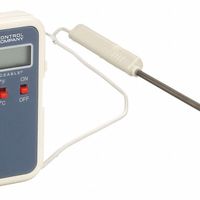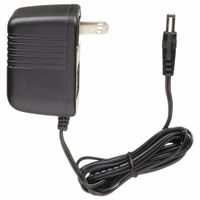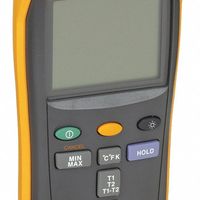Call +(254) 703 030 000 / 751 483 999 / 721 704 777
- Home
- Test Instruments
- Temperature And Environmental Measurement
- Benchtop Handheld Temperature Meters
.....Read More
Frequently Asked Questions
What is the accuracy of handheld temperature meters?
The accuracy of handheld temperature meters, often referred to as infrared thermometers or digital thermometers, varies based on the type, quality, and intended use of the device. Generally, these devices are designed to provide quick and reasonably accurate temperature readings without direct contact with the object or surface being measured.
1. **Infrared Thermometers**: These are commonly used for non-contact temperature measurements. Their accuracy typically ranges from ±1°C to ±2°C (±1.8°F to ±3.6°F), depending on the model and the conditions under which they are used. Factors such as distance-to-spot ratio, emissivity settings, and environmental conditions can affect accuracy.
2. **Digital Thermometers**: These are used for contact measurements, often in medical or laboratory settings. High-quality digital thermometers can have an accuracy of ±0.1°C to ±0.3°C (±0.18°F to ±0.54°F). They are generally more accurate than infrared thermometers for body temperature measurements.
3. **Calibration and Quality**: The accuracy of any handheld temperature meter can be influenced by its calibration. Regular calibration against a known standard is essential to maintain accuracy. Higher-end models often come with calibration certificates and are designed to maintain accuracy over time.
4. **Environmental Factors**: The accuracy can be affected by environmental conditions such as ambient temperature, humidity, and airflow. For infrared thermometers, reflective surfaces and varying emissivity can also impact readings.
5. **Usage and Maintenance**: Proper usage and maintenance are crucial for ensuring accuracy. This includes following the manufacturer's instructions, ensuring the device is clean, and storing it in appropriate conditions.
In summary, while handheld temperature meters provide convenient and rapid temperature readings, their accuracy can vary significantly based on type, quality, and usage conditions. Regular calibration and proper handling are key to maintaining their accuracy.
How do I calibrate a handheld temperature meter?
1. **Preparation**: Gather necessary equipment, including the handheld temperature meter, a reference thermometer with a known accuracy, and a stable temperature source like a water bath or dry block calibrator.
2. **Stabilize the Environment**: Ensure the calibration environment is stable and free from drafts or temperature fluctuations. Allow all equipment to reach thermal equilibrium.
3. **Select Calibration Points**: Choose at least three calibration points across the meter's operating range, typically low, mid, and high points.
4. **Set Up the Temperature Source**: Adjust the temperature source to the first calibration point. Allow it to stabilize.
5. **Insert Probes**: Place both the handheld meter's probe and the reference thermometer into the temperature source. Ensure they are at the same depth and not touching the sides or bottom.
6. **Allow Stabilization**: Wait for both readings to stabilize. This may take several minutes depending on the equipment and temperature source.
7. **Record Readings**: Note the readings from both the handheld meter and the reference thermometer. Calculate the difference.
8. **Adjust the Meter**: If the handheld meter has an adjustment feature, calibrate it to match the reference thermometer's reading. If not, note the deviation for future reference.
9. **Repeat for Other Points**: Adjust the temperature source to the next calibration point and repeat the process for all selected points.
10. **Document Results**: Record all readings, adjustments, and any deviations. This documentation is crucial for traceability and future reference.
11. **Final Check**: After calibration, recheck the initial calibration point to ensure consistency.
12. **Regular Calibration**: Establish a regular calibration schedule based on usage and manufacturer recommendations to maintain accuracy.
What types of probes are compatible with handheld temperature meters?
Handheld temperature meters are versatile tools used across various industries for accurate temperature measurement. They are compatible with several types of probes, each suited for specific applications:
1. **Thermocouple Probes**: These are the most common and versatile probes, available in types such as K, J, T, and E. They are suitable for a wide range of temperatures and environments, from cryogenic to high-temperature applications. Type K is particularly popular due to its wide temperature range and durability.
2. **RTD (Resistance Temperature Detector) Probes**: Known for their accuracy and stability, RTD probes are ideal for precise temperature measurements. They are typically used in industrial applications where accuracy is critical. RTDs are less susceptible to drift over time compared to thermocouples.
3. **Thermistor Probes**: These are highly sensitive and provide precise measurements over a limited temperature range. They are often used in medical applications, HVAC systems, and environmental monitoring due to their quick response time and accuracy in specific ranges.
4. **Infrared Probes**: These non-contact probes are used for measuring surface temperatures from a distance. They are ideal for situations where the object is moving, inaccessible, or too hot to touch, such as in electrical inspections or food safety checks.
5. **Surface Probes**: Designed to measure the temperature of flat surfaces, these probes are used in applications like monitoring machinery or HVAC systems. They often have a flat or disc-shaped sensor to ensure good contact with the surface.
6. **Immersion Probes**: Used for measuring the temperature of liquids, these probes are designed to be submerged in fluids. They are commonly used in laboratory settings, food processing, and chemical industries.
7. **Penetration Probes**: These are used for measuring the internal temperature of semi-solid materials, such as food products. They have a pointed tip for easy insertion.
Each probe type is selected based on the specific requirements of the measurement task, including temperature range, accuracy, response time, and environmental conditions.
How do I choose between a thermistor, RTD, and thermocouple meter?
To choose between a thermistor, RTD, and thermocouple meter, consider the following factors:
1. **Temperature Range**:
- **Thermistors**: Best for narrow temperature ranges, typically -50°C to 150°C.
- **RTDs (Resistance Temperature Detectors)**: Suitable for moderate ranges, generally -200°C to 600°C.
- **Thermocouples**: Ideal for wide ranges, from -200°C to 1750°C, depending on the type.
2. **Accuracy**:
- **Thermistors**: High accuracy within their limited range.
- **RTDs**: Offer excellent accuracy and stability over a broader range.
- **Thermocouples**: Less accurate than RTDs and thermistors but sufficient for many industrial applications.
3. **Response Time**:
- **Thermistors**: Fast response time due to small size.
- **RTDs**: Moderate response time.
- **Thermocouples**: Fast response, especially in small-diameter probes.
4. **Durability and Environment**:
- **Thermistors**: Less durable, not suitable for harsh environments.
- **RTDs**: More robust, suitable for industrial environments.
- **Thermocouples**: Highly durable, ideal for extreme conditions.
5. **Cost**:
- **Thermistors**: Generally the least expensive.
- **RTDs**: More costly than thermistors but offer better accuracy.
- **Thermocouples**: Vary in cost; some types are inexpensive, while others can be costly.
6. **Application**:
- **Thermistors**: Best for applications requiring high precision over a small range, like medical devices.
- **RTDs**: Suitable for laboratory and industrial applications needing high accuracy.
- **Thermocouples**: Preferred for high-temperature industrial processes.
7. **Calibration and Maintenance**:
- **Thermistors**: Require less frequent calibration.
- **RTDs**: Need regular calibration for precision.
- **Thermocouples**: Require periodic calibration due to drift over time.
Choose based on the specific requirements of your application, balancing accuracy, range, cost, and environmental conditions.
Can handheld temperature meters measure multiple samples at once?
No, handheld temperature meters cannot measure multiple samples at once. These devices are designed to measure the temperature of a single point or area at a time. They typically use sensors such as thermocouples, infrared sensors, or thermistors to detect temperature. Each sensor is calibrated to provide an accurate reading for a specific location or object.
To measure multiple samples simultaneously, you would need multiple sensors, each connected to its own meter or a multi-channel data logger. Some advanced systems can accommodate multiple probes, but these are not typically handheld devices. Instead, they are more complex setups used in laboratory or industrial environments.
Handheld temperature meters are portable and convenient for spot-checking temperatures in various locations, but they require the user to move the device from one sample to another to gather multiple readings. This limitation is due to the design and intended use of these meters, which prioritize portability and ease of use over the ability to measure multiple points simultaneously.
What is the battery life of a typical handheld temperature meter?
The battery life of a typical handheld temperature meter can vary significantly depending on several factors, including the brand, model, type of battery used, and the specific features of the device. Generally, these devices are designed to be energy-efficient to ensure prolonged use in various settings.
Most handheld temperature meters use standard batteries such as AA, AAA, or 9V alkaline batteries, while some models may use rechargeable lithium-ion batteries. The battery life can range from a few hours to several months of continuous use. For instance, a basic model with minimal features might last up to 200-500 hours on a set of alkaline batteries, assuming intermittent use. In contrast, more advanced models with additional features like backlit displays, data logging, or wireless connectivity might have a shorter battery life, ranging from 50 to 200 hours.
The frequency of use and the operating conditions also play a crucial role in determining battery life. Continuous use, especially in extreme temperatures, can drain the battery faster. Additionally, features such as backlighting, frequent data transmission, or alarms can significantly reduce battery life.
Some models come with power-saving features like automatic shut-off, which helps conserve battery life when the device is not in use. Rechargeable models may offer the convenience of recharging but might require more frequent charging cycles, depending on usage patterns.
In summary, while the battery life of a typical handheld temperature meter can vary widely, users can generally expect anywhere from 50 to 500 hours of operation on a single set of batteries, with specific durations depending on the device's features and usage conditions.
Are handheld temperature meters waterproof or weather-resistant?
Handheld temperature meters can be either waterproof, weather-resistant, or neither, depending on their design and intended use. Waterproof temperature meters are designed to withstand complete submersion in water without damage. They are typically sealed to prevent water ingress and are suitable for environments where they might be exposed to rain, splashes, or even submerged in liquids. These meters are often used in industries like food processing, where sanitation and exposure to water are common.
Weather-resistant temperature meters, on the other hand, are designed to withstand exposure to environmental elements such as rain, dust, and humidity but are not intended for submersion. They are typically used in outdoor settings where they might be exposed to adverse weather conditions but not directly immersed in water. Weather-resistant models often have protective casings and seals to prevent moisture and dust from entering the device.
The level of water resistance or weather resistance is often indicated by an IP (Ingress Protection) rating. For example, an IP67 rating means the device is dust-tight and can withstand temporary immersion in water. It's important to check the manufacturer's specifications to determine the level of protection a particular handheld temperature meter offers.
In summary, whether a handheld temperature meter is waterproof or weather-resistant depends on its design and the specific model. Users should select a meter based on the environmental conditions it will be exposed to and ensure it meets the necessary protection standards for their application.




